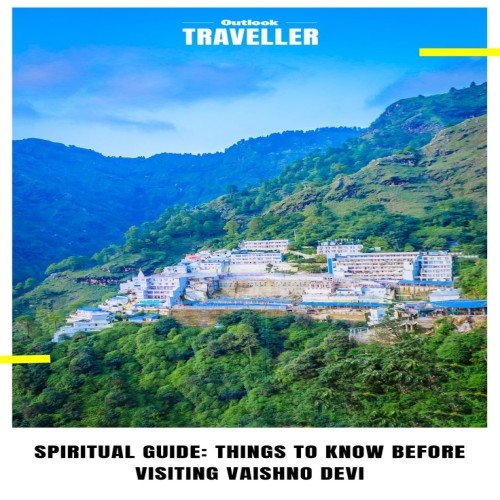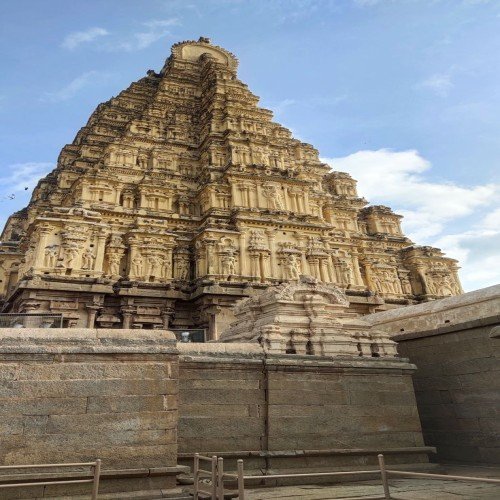
Discovering Patnitop: A Hidden Gem in Jammu and Kashmir
Posted at 13/Nov/24

Exploring Katra: The Gateway to Vaishno Devi
Posted at 13/Nov/24

Vaishno Devi Blog: A Spiritual Journey to the Divine Abode
Posted at 13/Nov/24

Discovering Hampi: A Journey Through the Ancient Ruins of Vijayanagara
Posted at 13/Nov/24
Written by Lalit Saini
Posted at 12/Nov/24
.jpg)
Madurai, often called the Athens of the East, is one of India’s oldest continuously inhabited cities, known for its impressive temples, colorful festivals, and bustling markets. Located along the Vaigai River, Madurai draws travelers seeking a mix of history, spirituality, and authentic South Indian culture. Here’s a guide to immersing yourself in the magic of Madurai.
Your visit to Madurai should begin with its most iconic attraction, the Meenakshi Amman Temple. This ancient temple complex is dedicated to Goddess Meenakshi (an avatar of Parvati) and her consort, Lord Sundareswarar (Shiva). The temple is a masterpiece of Dravidian architecture, with its towering, brightly painted gopurams (gateway towers) adorned with intricate carvings of gods, goddesses, and mythological creatures.
As you walk through the temple’s halls, each step reveals breathtaking art and sculpture. The Hall of Thousand Pillars is a highlight, with intricately carved pillars that create a mystical atmosphere. Don’t miss the stunning golden lotus pond, where pilgrims offer prayers before entering the inner sanctum.
After soaking in the temple’s grandeur, explore the bustling markets surrounding it. Here, you’ll find stalls selling everything from vibrant sarees and jewelry to traditional handicrafts and souvenirs.
On your second day, dive into Madurai’s royal history with a visit to the Thirumalai Nayakkar Palace, built in the 17th century by King Thirumalai Nayak. The palace showcases a stunning blend of Dravidian and Indo-Saracenic architectural styles. The grand courtyard and the towering pillars, some as high as 20 meters, are impressive remnants of its former glory. The intricate arches, domes, and stucco work are reminders of the city’s rich heritage.
In the evening, attend the light and sound show held at the palace, which narrates the story of the palace and Madurai’s history in a captivating way.
Start your final day in Madurai by visiting the Koodal Azhagar Temple, a lesser-known but equally beautiful temple dedicated to Lord Vishnu. The temple is one of the 108 Divya Desams (holy shrines dedicated to Vishnu) and is revered for its unique architecture and peaceful ambiance.
Next, stop by the Gandhi Memorial Museum to gain insight into India’s freedom struggle. The museum is housed in a 17th-century palace and includes rare artifacts, letters, and photographs detailing Gandhi’s journey and India’s path to independence. It’s a thought-provoking experience that offers a deeper understanding of India’s modern history.
In the late afternoon, head to the Samanar Hills on the city’s outskirts. These hills are dotted with ancient Jain caves, carvings, and inscriptions dating back over 2,000 years. A hike up the hills rewards you with sweeping views of the Madurai cityscape and a stunning sunset over the skyline. The tranquil environment makes it a peaceful place to end your day and reflect on your journey through Madurai.
Madurai offers a range of accommodations for every budget. Heritage Madurai is a luxurious option, complete with traditional architecture and beautiful gardens, offering a glimpse into Madurai’s rich heritage. For mid-range stays, Fortune Pandiyan Hotel and The Gateway Hotel Pasumalai provide comfort and convenience, while budget travelers might enjoy Hotel Supreme or Hotel Park Plaza, both located near major attractions.
Madurai is famous for its delicious South Indian cuisine, especially its idlis, dosas, and uttapams. Street food lovers should try the legendary Jigarthanda, a refreshing drink made with milk, almond gum, and ice cream.
For authentic Madurai flavors, Murugan Idli Shop is a must-visit for its fluffy idlis and chutneys, and Amma Mess is famous for its biryanis and non-vegetarian South Indian dishes. If you’re interested in local vegetarian cuisine, head to Sri Nagalakshmi Annexe or Annapoorna Mithai for a traditional thali experience.
Madurai offers a journey into the heart of Tamil Nadu’s spirituality, history, and culture. Whether you’re wandering through the intricately carved halls of Meenakshi Temple, marveling at the grandeur of Thirumalai Nayakkar Palace, or savoring a plate of authentic South Indian food, Madurai’s vibrant charm and ancient soul will stay with you long after your visit.
Copyright © Disha Holidays 2024-2025 | All Right Reserved